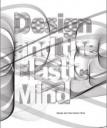Will Serious Games Scale Up?
Saturday, February 28th, 2009 One of the major causes of unwanted behaviors (unhealthy habits, over consumption, unsafe practices, corruptions, etc.) is that the artifacts we define to manage them – everything from weight loss programs, workplace incentives and government policies – don’t reflect how our minds actually work. They operate in a way that fails to respect the importance of low cognitive load, support for the psychology of self-regulation, emotional energy in behavior change or the non-rational calculus of visceral factors (meanings, urges, cravings, etc.) that strongly shape our cognition.
One of the major causes of unwanted behaviors (unhealthy habits, over consumption, unsafe practices, corruptions, etc.) is that the artifacts we define to manage them – everything from weight loss programs, workplace incentives and government policies – don’t reflect how our minds actually work. They operate in a way that fails to respect the importance of low cognitive load, support for the psychology of self-regulation, emotional energy in behavior change or the non-rational calculus of visceral factors (meanings, urges, cravings, etc.) that strongly shape our cognition.
Ignoring how the mind works in the design of your artifact for behavior change is a fatal flaw. Indeed, designs that change behavior put cognition first.
 The recent issue of Science Magazine focused on Education & Technology offers some insight into this point. They discuss why innovations such as using video game effects to design educational programs have not taken off. Education is an important element of many behavior change efforts and video games have proven to be one of the most naturally powerful devices for accelerating cognition. Yet the attempt to develop serious games, or games designed to teach and change behaviors rather than just entertain, have not scaled up.
The recent issue of Science Magazine focused on Education & Technology offers some insight into this point. They discuss why innovations such as using video game effects to design educational programs have not taken off. Education is an important element of many behavior change efforts and video games have proven to be one of the most naturally powerful devices for accelerating cognition. Yet the attempt to develop serious games, or games designed to teach and change behaviors rather than just entertain, have not scaled up.










